ISSN ONLINE(2278-8875) PRINT (2320-3765)
ISSN ONLINE(2278-8875) PRINT (2320-3765)
Jayashree Deka1, Rajdeep Haloi2
|
| Related article at Pubmed, Scholar Google |
Visit for more related articles at International Journal of Advanced Research in Electrical, Electronics and Instrumentation Engineering
This research paper deals with the effect of P,PI& PID controller in conventional cruise control which was implemented on a passenger car. Conventional cruise control takes over the accelerator operation at speeds over 40 km/h (25 mph) when it is engaged. An accurate positioning motor, with power amplifier that accepts a lowpower (almost no current) voltage signal, and moves the accelerator pedal in a manner proportional to the voltage signal. . This paper deals with the design, and estimation of the controllers for steady state behavior.
Keywords |
| P, PI & PID controller ,Car Cruise Control, Power Amplifier |
INTRODUCTION |
| Cruise control system is system to maintain accurately the driver’s desired speed by actuating the throttle-accelerator pedal linkage without any intervention from driver’s side. Cruise control system takes over the control the speed of the car by maintaining the constant speed set by the driver. Therefore, this system can help in reducing driver’s fatigue in driving a long road trip This technique of controlling the speed was used in automobile industries since 1910. |
| The driver can set the cruise control with cruise switches, ON, OFF, RESUME, Set/Accel that are located in the steering wheel spokes or on the edge of the hub (HondaCars) or on turn signal stalk(GM cars)The on/off button actually has no crucial role. But the Off button turns the cruise control off even if it is engaged .The Set/accel button tells the car to maintain the current speed. Holding down the Set/Accel but will accelerate the car. The brake pedal and the clutch pedal each have a switch that disengages the cruise control as soon as the pedal is pressed. |
| The cruise control system controls the speed of the car the same way by adjusting the throttle position. Actually cruise control actuates the throttle valve by a cable connected to an actuator instead of pressing the pedal. |
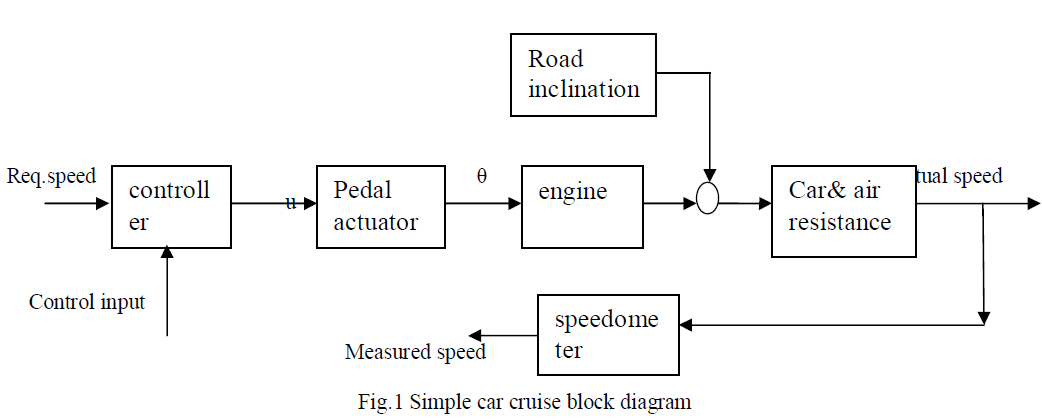 |
II.SYSTEM MODEL AND ASSUMPTIONS |
| The purpose of cruise controls system is to maintain a constant vehicle speed despite having external disturbance like change of wind or road grade. It is accomplished by: measuring the vehicle speed and then comparing it with the reference/desired speed and then automatically adjusting the throttle according to control law. |
| In practise, the inertia of the wheels of the car is ignored. Assuming the friction of the car is obtained by the friction caused by the motion of the car. A physical model of the cruise control system is illustrated as shown in Fig. 1. The “m” indicated as the mass of a car |
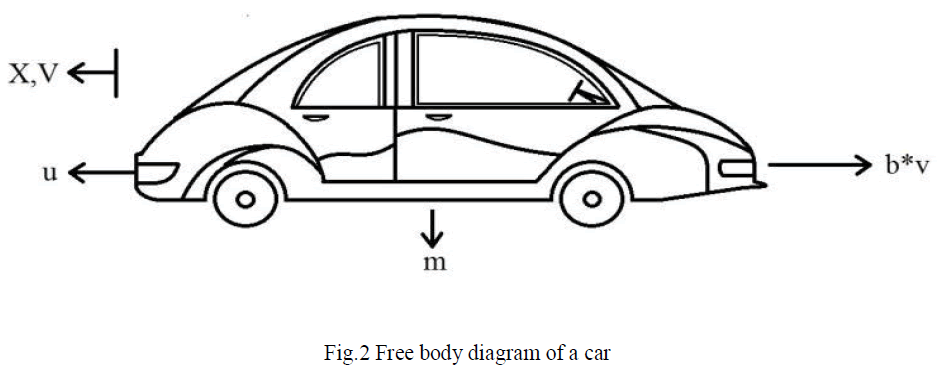 |
| From the Newton’s second law of motion, a differential equation of the cruise control model can be obtained, as in Eqn.1 |
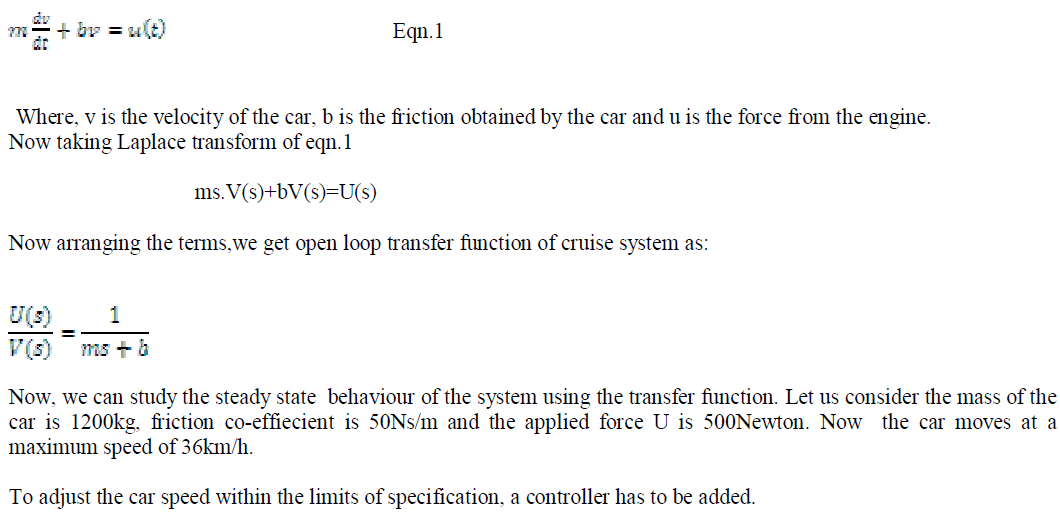 |
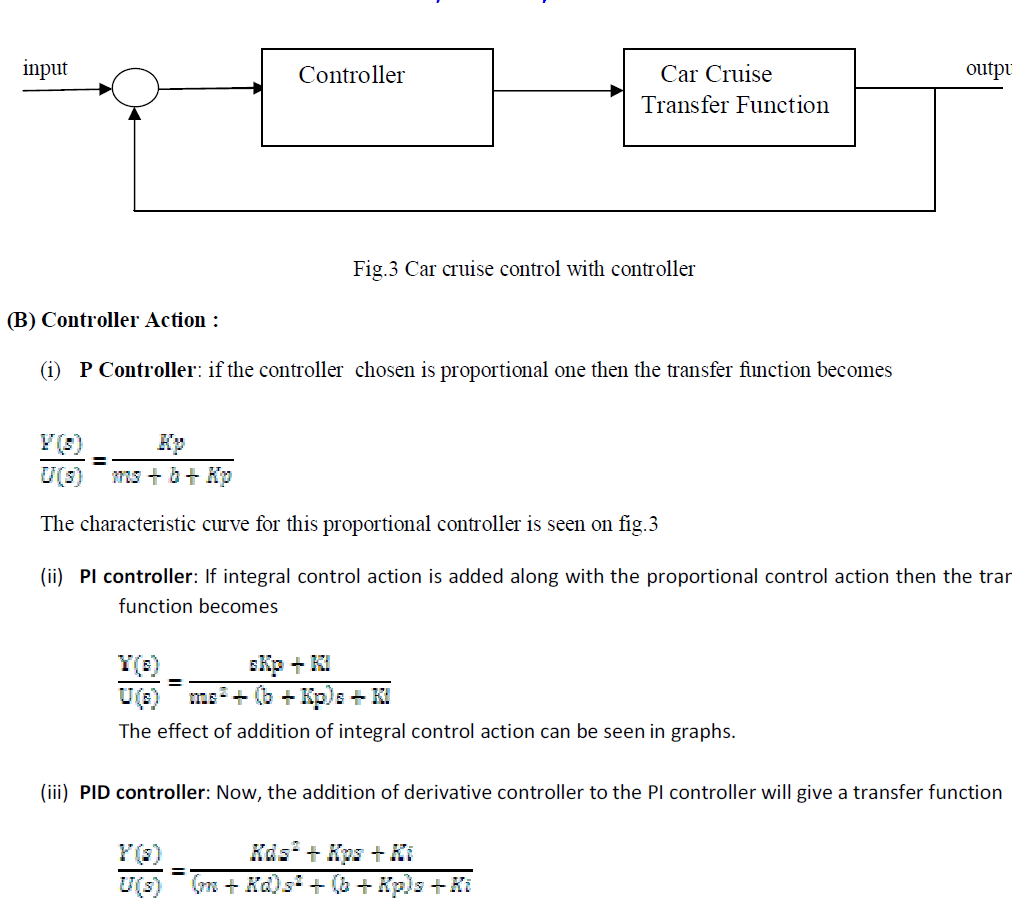 |
III.SIMULINK MODEL OF CAR CRUISE SYTEM |
| A trial version of the simple cruise control system is modelled in Matlab7.0 simulink and then the response is analysed along with Matlab simulation result. For this we have used the closed loop car cruise system. |
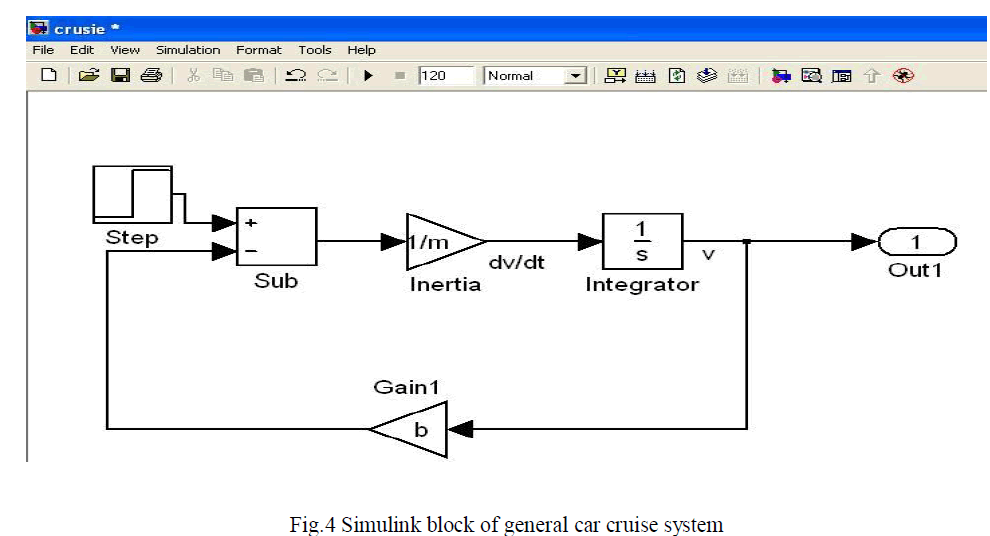 |
Simulink model of car cruise system with PI-controller: |
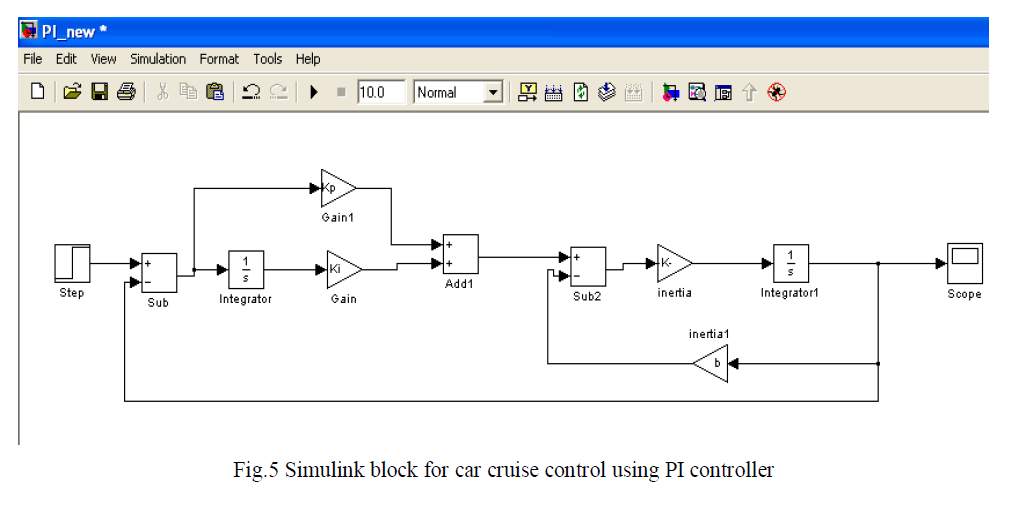 |
V. RESULTS AND DISCUSSIONS |
| Simulation of closed loop car cruise system steady state response with Kp=1000 is observed as shown below |
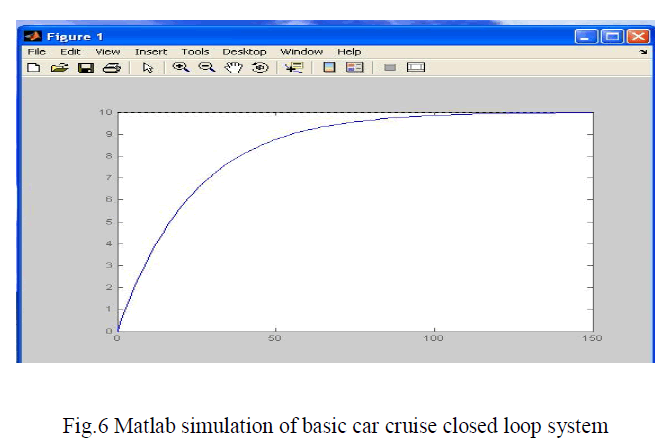 |
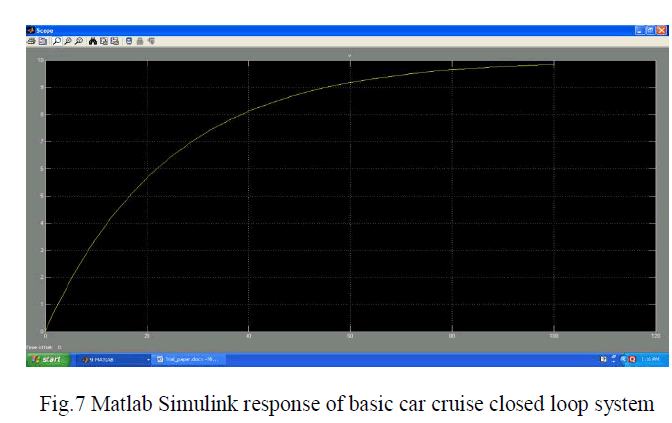 |
| Thus we have seen that the response of a car cruise system in matlab simulation and simulink is almost same. |
| Now after addition of PI controller in matlab & the simulink the response can be observed as follows. From the graphs it can be seen that after addition of the PI controller the car reaches to the required speed faster. |
| Simulation of car cruise system with Kp=1000 & Ki=50 |
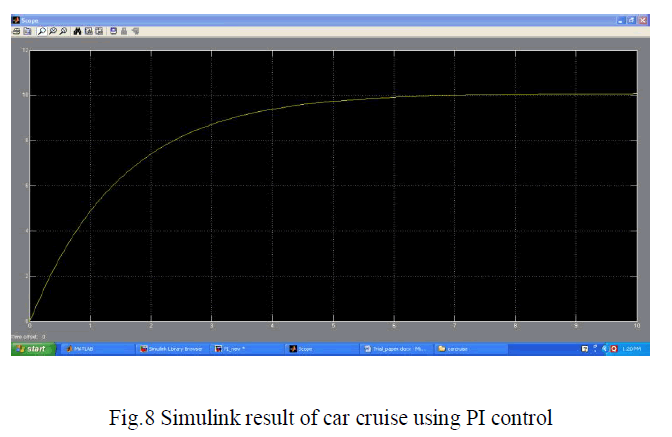 |
| Now the same will be implemented in Matlab simulation |
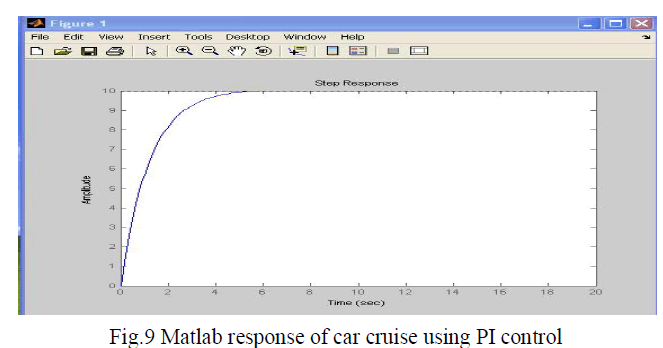 |
VI.CONCLUSION |
| Although the PID control constitute one of the most important topics in the in controlling any model yet in this paper only PI controller gives the desired speed to the driver of an intelligent Vehicle. The PI controller in this case provides faster speed of response when used to conventional closed loop car cruise system. |
References |
|